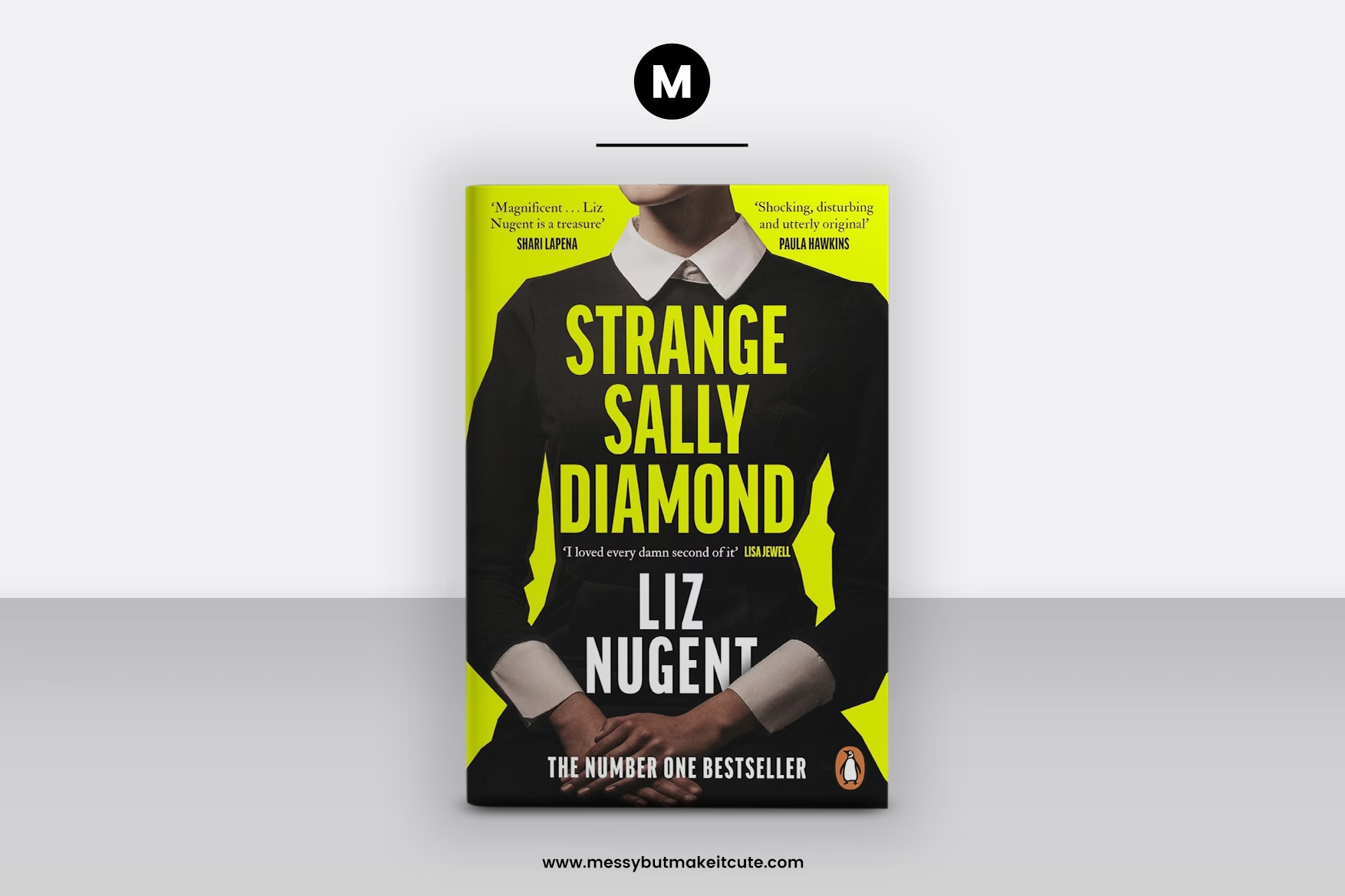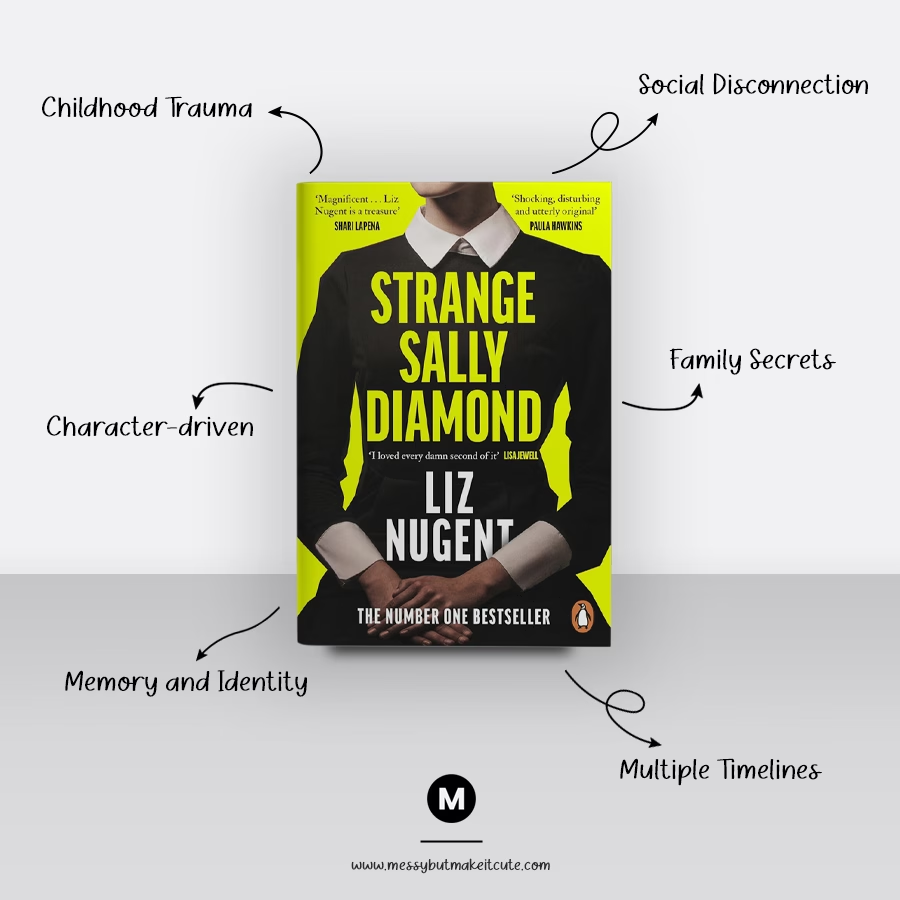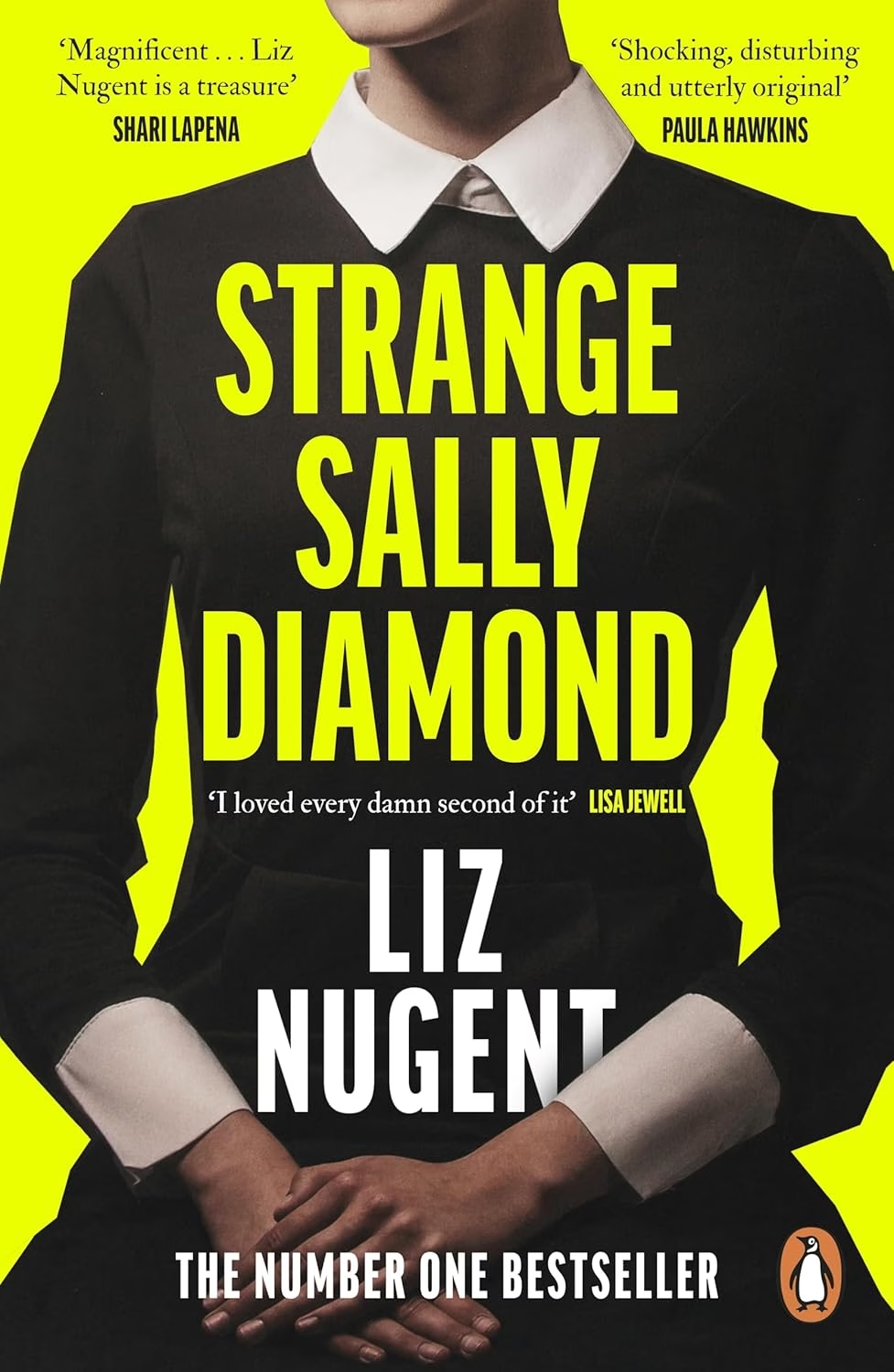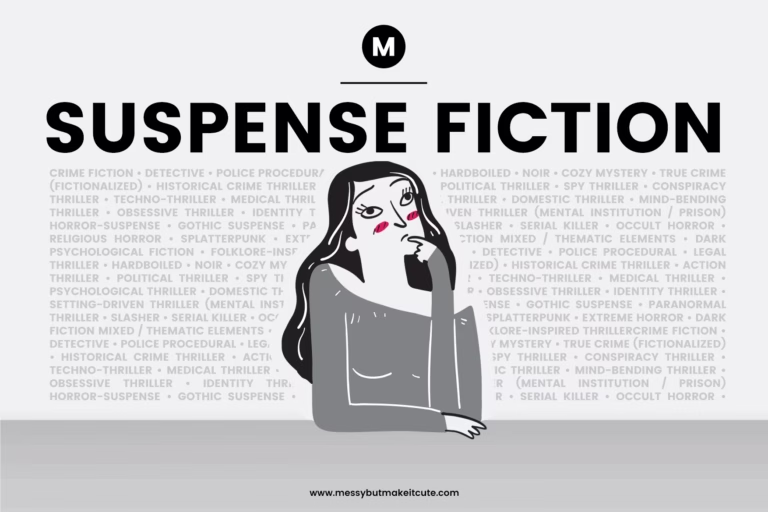
This book? Oh, he waited. Sat on my TBR for a whole year, patient, loyal, like a quiet little weirdo whispering (literally), “Whenever you’re ready…” And I, chaotic reader that I am, ignored him for months. But the moment I opened Strange Sally Diamond, he looked at me like, “Finally. Took you long enough.” And yes, he was 100% worth the wait.
This is hands-down my favorite read of 2025 so far, and here’s my full dissection of Strange Sally Diamond. You’ll find a summary, my review, the timeline explained, the ending explained, and a super helpful FAQ.
Let’s jump in!
Strange Sally Diamond – Book Synopsis
As an Amazon Associate I earn from qualifying purchases. This post may contain affiliate links that earn me commissions at no extra cost to you.
Strange Sally Diamond – Quick Summary

Strange Sally Diamond – Trigger Warnings, Sensitive Topics and Age Rating
Before we go any further, I always like to include a quick note on sensitive content. Every reader is different, and some themes in this book might be difficult for certain people.
If you prefer to check content warnings before reading, just click below to reveal the list of trigger warnings, sensitive topics and age ratting.
Plot Overview
Strange Sally Diamond begins with a moment that is both bizarre and deeply revealing. One morning, Sally wakes up to find that her father has died. Remembering something he always told her, “When I die, just put me in the bin,” she tries to follow his instructions exactly as he said. What she sees as a practical response quickly draws the attention of the police, the media, and her small community.
Sally is a 42-year-old woman living in rural Ireland. She has always been different, socially awkward, blunt, and deeply sheltered. Raised by her adoptive parents, both of whom were very protective, Sally has never fully understood why she struggles to connect with people or why she remembers nothing before the age of seven.
As the story unfolds, Sally discovers a series of letters left behind by her father. These letters begin to reveal the truth about her early life, truths that are horrifying and life-altering. With each revelation, Sally starts to piece together her identity, coming to terms with a childhood marked by trauma, captivity, and abuse.
At the same time, we follow a parallel narrative from Peter, a man living in New Zealand, whose past slowly begins to connect with Sally’s in unexpected and chilling ways. His story adds depth to the mystery and raises the emotional stakes even further
My Thoughts
What I Loved
Sally! How could anyone not love her? You only need to read the first two paragraphs from her point of view to feel completely intrigued. She’s so well-developed, layered, and authentic, and at times, unexpectedly funny. Don’t get me wrong, this story will absolutely break your heart. It’s a deeply sad story, but Sally’s presence at the heart of it draws you in even more, making you care intensely about the past that brought her here.
I couldn’t put the book down because of her. You want to follow Sally, to watch her grow, and you root for every step forward she takes. Each small victory in her emotional progress felt like a personal win. I found myself thinking, Yes, Sally! You go, girl. You deserve this!
Her journey is impossible to ignore, even as it unfolds alongside so much trauma and darkness. She’s a truly unique character, and without a doubt, one of the biggest strengths of this book.
What Surprised Me
One thing that really surprised me was how Liz Nugent handles the darker themes in Strange Sally Diamond. As someone who actually enjoys twisted, intense stories with vivid and sometimes graphic details, I was impressed by how she conveys the weight of trauma without leaning on shock value. The horror is absolutely there, but it’s felt, not shown. She focuses on the emotional and psychological aftermath rather than explicit scenes, and somehow that makes it even more haunting.
What really stood out to me was how the book explores the way relationships, good, bad, or absent, shape how someone copes with trauma. It shows how the presence or absence of love and support can change everything. The way Sally connects with people, or struggles to, adds so much emotional depth. It made me think about how recovery isn’t a straight line, and how much it depends on who’s around you.
It’s a dark story, but it’s handled with care, It left me thinking, not just about Sally, but about how people carry pain, and what it means to keep going.
Vibe Check
The overall vibe of Strange Sally Diamond is a mix of unsettling darkness and quiet hope. The story is told through a dual timeline, and each side brings a very different emotional experience. In the present-day chapters, we follow Sally’s point of view. These parts are still heavy, but easier to move through because of how Sally sees the world. She’s trying to fit in, understand people, and build a life outside the one she has always known. Her voice adds unexpected moments of humor, awkwardness, and even warmth. It can be sad, yes, but also oddly uplifting at times.
On the other hand, the chapters that take place in the past, told from another pov (no spoilers), carry most of the book’s darkness. This is where the trauma lives. These sections are cold, disturbing, and often difficult to read. There is emotional and psychological violence, and a deep sense of discomfort that lingers. The contrast between the two timelines is striking, and it creates a haunting tension that pulls you through the book. It is not just dark for the sake of being dark, it is layered, human, and deeply emotional.
What Didn’t Work for Me
If I had to mention one thing that didn’t fully land for me, it would be the ending, specifically the point where the two timelines come together. After such a strong and intense build-up, that moment felt a little too quick. I just wanted more time to see how Sally really processes everything, how her past and present collide, and what that means for her going forward. The resolution made sense, and it worked, but I was hoping for a deeper look into her emotional growth, especially after everything she’s been through. Then again, maybe that’s just me not wanting to say goodbye.
I got so attached to Sally that I would’ve happily stayed with her for a few more chapters.
About The Plot Twist
If you’re expecting a big, shocking plot twist, this isn’t that kind of story. There’s no jaw-dropping moment or dramatic reveal. Instead, Liz Nugent gives us all the pieces as the story slowly unfolds. By the time you reach the end, everything just clicks into place like a puzzle. It’s not about surprise, it’s about understanding. It’s more haunting than shocking, and honestly, that worked perfectly for me, and for a story like this.
Conclusion
Strange Sally Diamond isn’t your typical dark thriller filled with graphic violence or horror. It’s more like a fast-paced mystery with strong emotional depth, almost a psychological drama, if that makes sense. It handles dark themes, yes, but in a thoughtful and restrained way.
I honestly can’t believe I waited so long to read this book. Sally is such a unique and unforgettable character, and her story pulled me in completely. This book explores trauma, abuse, and the lasting effects of childhood horror, but it also shows how two people who experienced similar pain can cope in completely different ways.
It’s emotional, dark, and deeply human, and one of the best reads I’ve picked up in a long time.
Some Book Quotes
“Dad told me that my mind worked perfectly but that I was emotionally disconnected. I was his life’s work, he said. I asked him if he could reconnect the emotions and he said all he and Mum could do was love me and hope that, one day, I would learn to love them back.”
“I’m not a child locked in a room. Violence is almost never an appropriate response. You can use your voice. You can walk away.”
“He was no longer he, it was a body, an ‘it’, in a domestic incinerator beside a barn in a field beside a house at the end of a lane.”
Strange Sally Diamond – Full Spoilers
Strange Sally Diamond – Character List
|
Character Name |
Character Role |
|---|---|
|
Sally Diamond (Mary Norton) |
The protagonist, a socially deficient woman uncovering her traumatic past as Denise and Conor’s daughter. |
|
Peter Geary (Steve Armstrong) |
Sally’s biological brother, who reconnects with her under a false identity and later flees. |
|
Amanda |
Sally’s niece, born to Peter and Lindy, adopted out, and performs at a concert in the epilogue, symbolizing hope. |
|
Angela Caffrey |
Sally’s mother’s business partner and friend, a GP who supports Sally after Tom’s death and uncovers Mark’s true identity. |
|
Anubha |
A divorced Indian woman in Carricksheedy, a friend of Sally who briefly suspects Mark’s intentions. |
|
Aunt Christine |
Sally’s mother’s sister, who provides emotional support and reveals details about Sally’s past. |
|
Caroline |
A local woman in Carricksheedy who clashes with Sally, escalating tensions at a party. |
|
Conor Geary |
Sally and Peter’s biological father, a psychopathic kidnapper who abducted Denise and died in a car fire in 1985. |
|
Denise Norton |
Sally and Peter’s biological mother, kidnapped by Conor, gave birth to them in captivity, and died in a psychiatric hospital. |
|
Detective Inspector Baskin |
A Dublin detective who investigates the origins of the teddy bear Toby sent to Sally. |
|
Detective Inspector Howard |
A detective who informs Sally about Conor Geary’s crimes and Peter’s potential involvement. |
|
Elaine Beatty |
Mark’s ex-wife, who provides Angela with information about Mark’s true identity as Peter Geary. |
|
Fernanda |
A Brazilian woman in Carricksheedy, part of Sally’s new social circle. |
|
Fergus |
A child in Carricksheedy who throws stones at Sally’s window, prompting community interaction. |
|
Geoff Barrington |
Sally’s solicitor, who handles Tom’s estate and advises her on legal matters. |
|
Ger McCarthy |
A Carricksheedy neighbor who attends Sally’s party and supports her integration into the community. |
|
Georgia (Auntie Georgia) |
Rangi’s aunt in New Zealand, who searches for him after his disappearance. |
|
Ian |
A librarian in Roscommon who runs community groups, mentioned in Tom’s letter to Sally. |
|
James Armstrong |
Conor Geary’s alias in New Zealand, Sally and Peter’s father, who died in a car fire. |
|
Jean Diamond |
Sally’s adoptive mother, a compassionate doctor who died when Sally was young, shaping her upbringing. |
|
Kate Ngata |
A podcaster from Hoani Mata Productions, investigating Peter’s past and contacting him about his origins. |
|
Kieran |
A Carricksheedy neighbor who attends Sally’s party with his wife, Stella. |
|
Laura |
A Carricksheedy neighbor who joins Sally’s social circle and attends her party. |
|
Lindy Weston (Linda) |
A woman kidnapped by Conor and later Peter, Amanda’s mother, who died in 2012. |
|
Lorraine |
Aunt Christine’s friend, who attends Uncle Donald’s funeral and interacts with Sally. |
|
Lucas |
A man at Sally’s music job who interrupts her playing and offers her part-time work. |
|
Maduka |
A child in Carricksheedy who breaks Sally’s window, prompting her to engage with the community. |
|
Margaret |
Conor Geary’s sister, who wrote to Sally about their mother’s death and family history. |
|
Mark Butler |
Mark is Sally’s biological uncle who enters her life under the guise of a stranger, eventually becoming a supportive but sometimes tense presence as she uncovers her past. |
|
Martha |
A Carricksheedy neighbor who befriends Sally but later reveals harsh truths about Tom and Jean. |
|
Nadine |
Angela’s partner, an interior designer who helps Sally with her new cottage and social integration. |
|
Nurse Crawley |
A nurse at St Mary’s Hospital during Denise’s institutionalization, distressed by an inquiry. |
|
Rangi |
Rangi was Peter’s neighbor and only friend in New Zealand. |
|
Rodrigo |
A Brazilian man in Carricksheedy, part of Sally’s new social circle. |
|
Sandra |
A librarian in Roscommon who runs community groups, mentioned in Tom’s letter. |
|
Sean |
A child in Carricksheedy who throws stones at Sally’s window, prompting community interaction. |
|
Stella |
A Carricksheedy neighbor involved with a homeless charity, who attends Sally’s party. |
|
Stuart Lynch |
The bank manager who handles Sally’s financial arrangements after Tom’s death. |
|
Sue |
A Carricksheedy neighbor and friend who supports Sally’s social growth and shopping trips. |
|
Tina |
Sally’s therapist, who helps her manage anger and navigate social interactions. |
|
Tom Diamond |
Sally’s adoptive father, a psychiatrist who raised her protectively and left revealing letters. |
|
Uncle Donald |
Aunt Christine’s husband, whose funeral Sally attends, prompting further revelations. |
|
Udo |
A Carricksheedy neighbor who hosts a party where Sally socializes and meets Mark. |
|
Valerie |
A Carricksheedy neighbor who plays the accordion at Sally’s party, fostering community bonds. |
Strange Sally Diamond FAQ
What Is the Letter in the US Edition of Strange Sally Diamond?
Summary of the Letter to Sally in the US Edition of Strange Sally Diamond
Angela writes to Sally during the pandemic, acknowledging that recent events have been deeply traumatic for her. The letter is dated December 2020.
- Angela expresses concern about Sally returning to isolation and emphasizes that many people care about her.
- Angela admits that some choices, like withholding the truth about Tom and Jean’s relationship, may have been mistakes, but encourages Sally to focus on the future rather than the unchangeable past.
- Sue regrets speaking to the podcaster and only did so to protect Sally’s name. The podcast was never aired.
- Mark is recovering from the ICU and asked about Sally. Angela reminds Sally that Mark is family and encourages her to reconnect with him.
- Christine is open to reconnecting as well but asks that Sally return to therapy with Tina first. Angela also notes that Sally owes Christine an apology.
- Several others, Martha, Stella, Anubha, Rodriguo, Fernanda, Kenneth, Udo, and their children, miss Sally and want to reconnect.
- Nadine and Angela plan to gather everyone outside Sally’s door the following Saturday at 1 p.m. to sing and invite her on a socially distanced walk and picnic.
- The tone of the letter is gentle, hopeful, and supportive, offering Sally a chance to reconnect with her community.
- Angela closes the letter with warmth and encouragement: “We are not taking no for an answer… wrap up warm.”
Let’s Chat!
Did you feel connected to Sally? Were you rooting for her the whole way through? And if you read the US edition, did you notice the extra letter near the end? I’d love to know what you thought about that added touch.
Drop a comment below and let’s talk about it! Whether you’ve already finished the book or just added it to your list, I’m always up for a good book chat.




